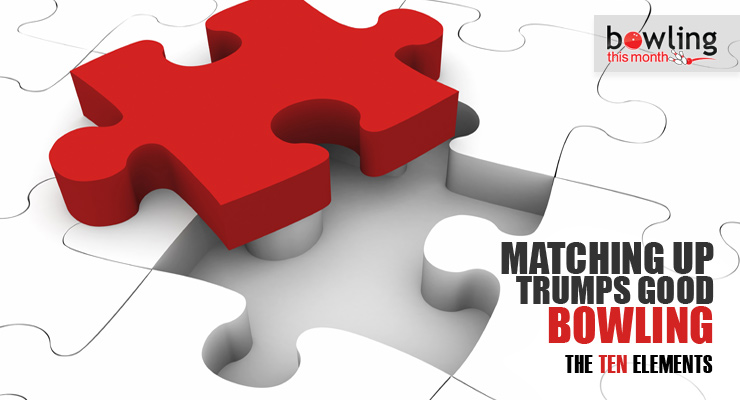Article Contents
- 1. Lane surface
- 2. Lane condition
- 3. Topography
- 4. Other bowlers on the pair
- 5. Ball speed
- 6. Rev rate
- 7. Balance
- 8. Axis tilt
- 9. Axis rotation
- 10. Line preference
- 11. Finding the right ball in your bag
- 12. An experiment
Note: This article is only available to Bowling This Month subscribers.
The term “matching up” is much bandied about in modern bowling. As I have often written, you cannot outbowl a bad ball reaction no matter how good you are. The bowler who is “matched up” will win out in the end. So, what is matching up? First, let me tell you what it is not.
Matching up is not running out and buying a particular ball because you liked the advertisement or because you’ve seen others be successful using it. It’s also not necessarily using the ball that will hook the most. It is using the ball that will retain the maximum amount of energy as it enters the pin deck from the correct angle to give you the maximum reaction (remember Newton’s Third Law of Motion: For every action there is an equal and opposite reaction.)
Matching up is finding the ball that will get to the pocket and carry the corner pins. There are ten different elements that determine what ball will match up with the lanes at a given time and only four of them affect every bowler on the pair. The other six are unique to each individual bowler. Let’s talk about the four common elements: Lane surface, lane condition, topography, and other bowlers on the pair.
Lane surface
The lane surface is both the lane material and the area of wear dictated by the center’s lane condition. The differences between synthetic lanes and wood lanes are obvious, but the differences between lanes from different manufacturers or even the same manufacturer that were made at different times are more subtle. Even on synthetic lanes, play will cause microscopic scratches on the lane surface that will increase the friction on that part of the lane.
Lane condition
The oil pattern will, of course, influence how you have to play the lanes and what ball will best match up for you. Don’t assume that, because it’s a typical ...
Already a premium member? Click here to log in.


 (Only
(Only 